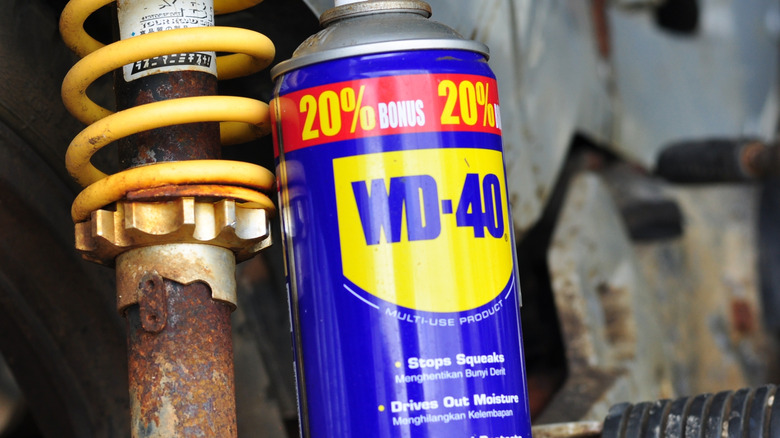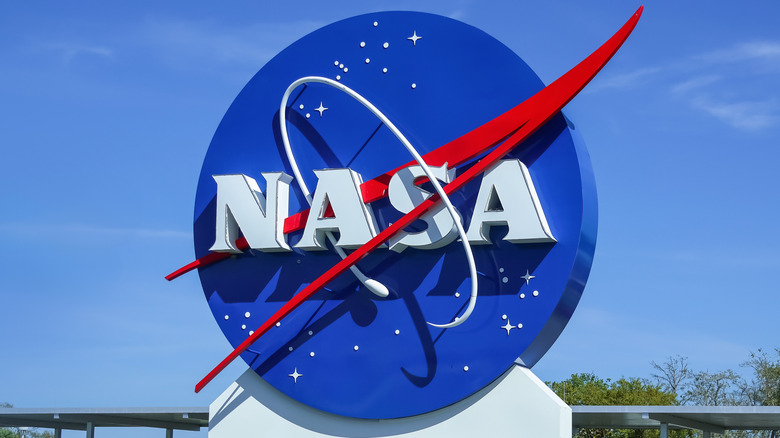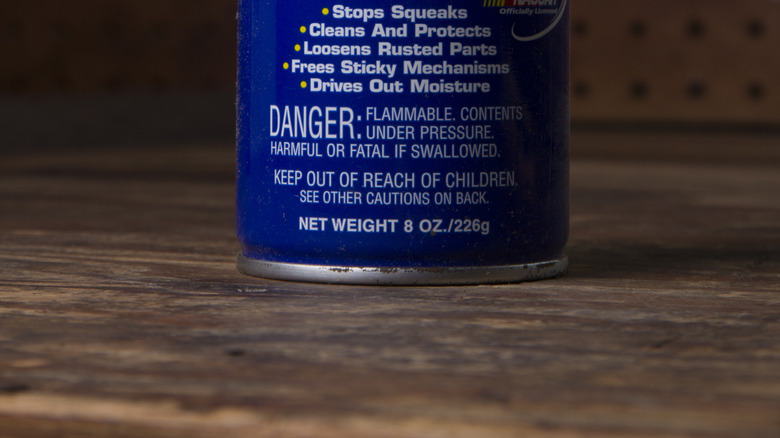What Does WD-40 Stand For And Who Invented It? (No, It Wasn't NASA)
If you've spent any amount of time working in a garage, helping out in someone's home workshop, or walking the aisles of a hardware store, WD-40 should be familiar to you. The brand and its versatile product have been on shelves for decades, becoming a staple of all the aforementioned locations and more. At the time of this writing, there are tons of WD-40 products you likely didn't know exist, and even more innovative uses for them than you could imagine. Still, you might not actually know some of the finer details behind the original miracle spray.
First and foremost is the name, which isn't forthcoming about what the product actually is. WD-40 stands for Water Displacement, 40th Formula, which ties directly to the substance's origin and how it came to be. WD-40 was developed by a small company called Rocket Chemical Company — now the WD-40 Company — way back in the 1950s. The San Diego, California-based business, led by founder Norm Larsen, was hard at work trying to come up with a formula for aerospace-grade solvents and degreasers. Though it took some effort, and a whopping 40 attempts, the company cracked the code on that try, and the rest is history.
Despite the true story of WD-40 and the company behind it being very accessible knowledge, there's a major misconception still floating around. The National Aeronautics and Space Administration has many inventions it still uses, with some thinking WD-40 is one of them. Where did the story that the spray is a NASA creation come from?
Why do people associate WD-40 with NASA?
Seeing as NASA isn't directly mentioned at all when it comes to the tale of WD-40's naming or creation, it seems odd that the government agency is thought of so widely as its creator. In fact, WD-40 came into being in 1953, while NASA wasn't even established until late 1958, so logically, the rumor doesn't make any sense. At the time of this writing, there's no concrete source regarding where the idea came from, so all we can do is speculate on what led to its creation. Not knowing crucial historical details but being aware of others could lead one to believe NASA made WD-40. As mentioned previously, Rocket Chemical Company intended for WD-40 to be used for aerospace endeavors.
With NASA years from becoming a reality, military contractor Convair first used WD-40 for the Atlas missile program to prevent outer corrosion. WD-40 was then later sold to the public in aerosol can form, just as it is in the modern era, with NASA finally hopping on the bandwagon in the early 1960s. Specifically in 1964, NASA used the substance on the Friendship VII spacecraft, which was famously piloted by astronaut John Glenn in a successful expedition around the Earth. It provided a protective coating on the craft, successfully putting its anti-corrosive formula to the test. This very public, well-documented, and highly publicized event likely led to the misconception over time that NASA created WD-40, not a small company from California.
While NASA used WD-40 to help launch one of its most famous spacecraft, that's just one example of the product taking its place in history. It has notably been utilized to help out those on the ground as well.
NASA's use of WD-40 isn't the product's only historical highlight
Though it had technically gotten off the ground before, NASA's use of WD-40 on the Friendship VII solidified its place as a helpful element of space travel and a major scientific achievement. At the same time, before this landmark moment, Norm Larsen's anti-corrosive spray had already made history on Earth. This instance of it stepping in to help came in 1961 in the aftermath of Hurricane Carla. The storm did a number on the Gulf Coast of the United States, so the Rocket Chemical Company went above and beyond to manufacture more of it for the region. It was used to repair vehicles and equipment damaged in the extreme weather event.
Seven years after Hurricane Carla, and four after aiding in the launch of Friendship VII, WD-40 once again found a spot in the history books. In 1968, the Vietnam War had been going for well over a decade, with it still a ways away from its April 30, 1975, end date. To help out those in the United States military overseas, Rocket Chemical Company's WD-40 was included in goodwill kits alongside other provisions. WD-40 was used on weaponry to prevent or stop moisture damage, which was a near-unavoidable reality given the hot, rainy, and swampy nature of Vietnam.
No matter how you look at it, WD-40, or Water Displacement, 40th Formula, from Rocket Chemical Company, is a hugely influential product. NASA may not have invented it, but it and countless others have benefitted from its creation throughout the decades. Of course, it's not a miracle product, as there are still a few specific things WD-40 should never be used on.


